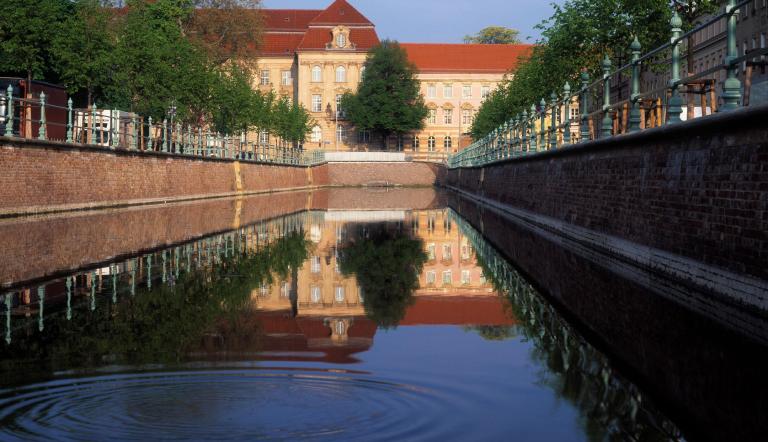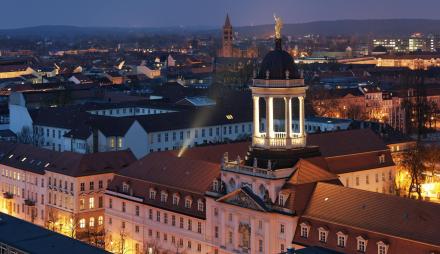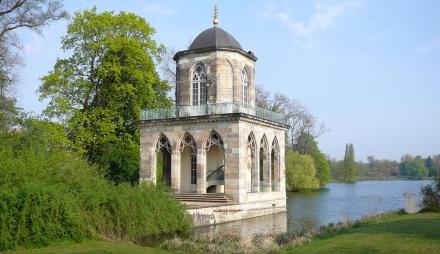
Picturesque and practical like Dutch canals, the Stadtkanal once wound its way through Potsdam, rich in history. As early as the Middle Ages, the first drainage ditches existed in Potsdam. In 1722, King Frederick William I of Prussia, known as the "Soldier King", had the natural ditch—fed by the River Havel—straightened and deepened. This newly navigable waterway, suitable for Havel barges, was lined with oak planks and spanned by wooden folding bridges. The Stadtkanal proved to be a practical transport route for construction materials and helped drain the swampy building ground of Potsdam.
The king’s son and successor, Frederick the Great, incorporated artistic ideas into the functionality of the canal. The waterway was enhanced with sandstone cladding, an ornate iron railing, and nine stone bridges. For more than 200 years, Potsdam enjoyed the charm of a Dutch-style canal landscape—an enclave that inspired both artists and townspeople with its romantic atmosphere and vibrant market life.
In 1965, the canal was filled in. After the fall of the Berlin Wall, the desire arose to restore at least parts of the city's former beauty. Thanks to the efforts of the Association for the Reconstruction of the Stadtkanal in Potsdam and with support from many patrons, the city, and the state government, the first section of the canal was reopened in time for the 2001 Federal Garden Show. Step by step, the Stadtkanal is being reconstructed. For canal enthusiasts, the association offers cast-iron railing posts as a way to be immortalized as co-builders of this historic project.
Links
Address
Stadtkanal
14467 Potsdam
Germany



